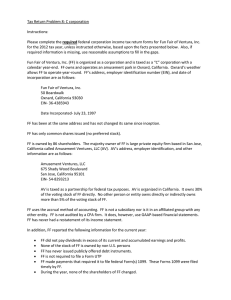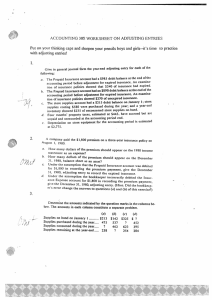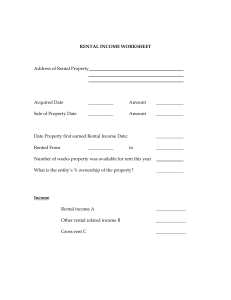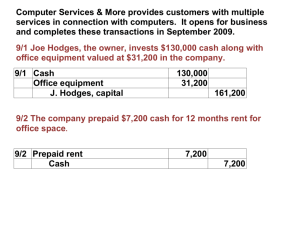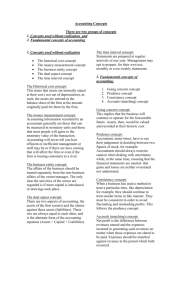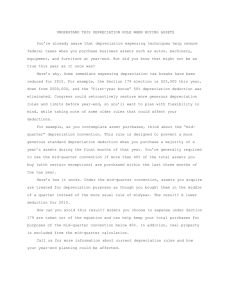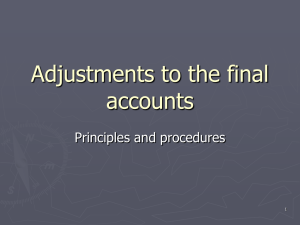Accruals and Prepayments: Accounting Adjustments Explained
advertisement
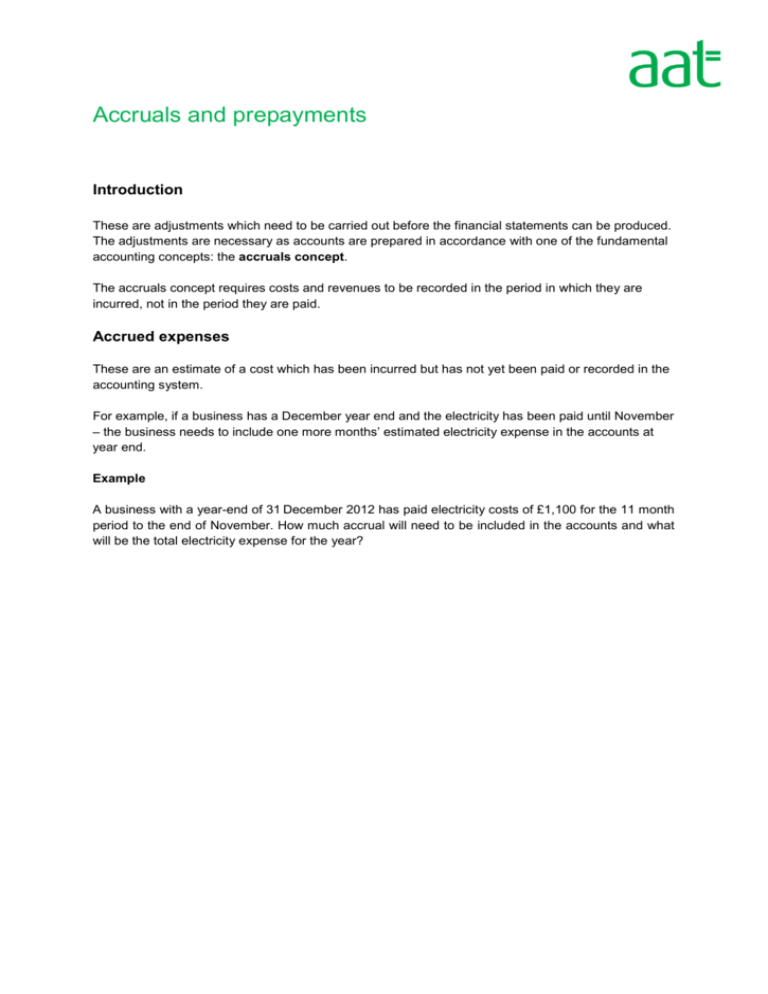
Accruals and prepayments Introduction These are adjustments which need to be carried out before the financial statements can be produced. The adjustments are necessary as accounts are prepared in accordance with one of the fundamental accounting concepts: the accruals concept. The accruals concept requires costs and revenues to be recorded in the period in which they are incurred, not in the period they are paid. Accrued expenses These are an estimate of a cost which has been incurred but has not yet been paid or recorded in the accounting system. For example, if a business has a December year end and the electricity has been paid until November – the business needs to include one more months’ estimated electricity expense in the accounts at year end. Example A business with a year-end of 31 December 2012 has paid electricity costs of £1,100 for the 11 month period to the end of November. How much accrual will need to be included in the accounts and what will be the total electricity expense for the year? And how would it look in the accounts… Electricity expense Dr £ Total Cr £ Total Accruals Dr £ Total Cr £ Total Bank Balance b/d Total Dr £ 14,000 Cr £ Total Accrued income This is an estimated amount of income which has been earned but the transaction has not yet been received or recorded in the accounting system. For example, if a business with a year-end of 31 December has a rental property but the rent has only been received to the 31 October. There are two months’ rental income expected before year end which will need to be included in the accounts to 31 December. Example A business with a year-end of 31 December rents out a property for £500 per month. Rent has been received to the 31 October. What would be the year end adjustment for accrued income and what would be the total rental income for that year? And how would it look in the accounts…. Rent received Dr £ Total Cr £ Total Accrued income Dr £ Total Cr £ Total Bank Dr £ Total Cr £ Total Prepayments These adjustments are required due to the accruals concept. A prepayment is an adjustment that businesses make if they have already paid for goods or services which relate to the next accounting period. The same can apply to income as a customer may pay for a service which is not going to be delivered until the next accounting period. Prepaid expenses These are a current asset of a business, as an expense has already been paid which relates to a future accounting period. For example if a business has paid their insurance premium up to the end of February 2013 but their year-end is 31 December 2012 then 2 months’ premiums have been paid which relate to the next accounting period. Example A business with a year-end of 31 December 2012 has paid their annual insurance premium until the 28 February 2013 for £360. Calculate the value of the prepayment adjustment for the financial statements for the year ended 31 December 2012. And how would it look in the accounts… Insurance Dr £ Total Cr £ Total Prepayment Dr £ Total Cr £ Total Bank Dr £ Total Cr £ Total Prepaid Income Prepaid income is income which has been received for goods or services which are going to be provided in a future accounting period. Prepaid income is a current liability in the accounts. For example, if a business has a rental property and the tenant has paid their rent to the end of March 2013 but the year end is 31 December 2012 then the rental income of three months to the end of March has been received ahead of the year end. Example A business with a year-end of 31 December 2012 rents out a property for £700 per month. The tenant usually pays monthly, however on 1 October they decided that they would pay six months’ rent for the period 1 October to 31 March 2013. What is the value of the prepaid income adjustment required for the accounts for the year ending 31 December 2012? And how would it look in the accounts… Rent received Dr £ Total Cr £ Total Bank Dr £ Total Cr £ Total Prepaid income Dr £ Total Cr £ Total Disposal of Fixed Assets A crucial part of accounting for fixed assets is how a business records the disposal of their assets. On the sale of a fixed asset it is likely that the proceeds from the sale will not be equal to the value of the fixed asset in the balance sheet: the net book value. Let’s have a look at the example below to show how the disposal would be recorded in the accounts Example A company with a year-end of 31 December 2012 owns a machine which was bought on 1 February 2010 for £10,000 plus VAT. The machine has been depreciated on a straight line basis of 20% each year. The machine was sold on 31 December 2012 for £2,500. A full year’s depreciation is charged in the year of acquisition but none in the year of disposal. Calculate the depreciation charge per year, the accumulated depreciation, the net book value of the machine when sold on 31 December 2012, and the profit or loss on disposal. Net book value of machine £ Cost Accumulated depreciation Net book value Proceeds Profit/(loss) on sale And how would it look in the accounts… Disposals Dr £ Total Cr £ Total Machine Balance b/d Dr £ 10,000 Total Cr £ Total Accumulated depreciation Dr £ Cr £ Balance b/d Total 4,000 Total Bank Dr £ Total Cr £ Total

